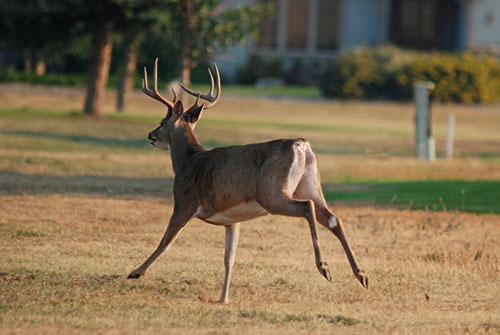(c) Jack Ballard
Near the edge of town during mid-summer, just at twilight, I spied two whitetail bucks feeding in a meadow. Intrigued by their large, fuzzy antlers, I pulled over at the side of the road to give my son in the back seat a better look. On closer examination, we noticed something very strange about one of the deer. He had no tail.

A few months later, while puttering about trying take photos of a jackrabbit, I noticed a buck deer bounding pell-mell in my direction. It was a sight I’ve seen a thousand times, but something didn’t seem right. Viewing the photos on my computer later in the day, I recognized the tailless whitetail. It was the same buck, absent the trademark white flag normally carried upright on the rump of a deer when running.
Initially amused, I soon found myself zooming in on the image of the unfortunate creature to examine its missing appendage. Within the tail of a whitetail deer is a series of thin bones, much smaller but similar to those in the spine. This buck wasn’t simply missing the hair on its tail. Its tail was completely gone, severed from its body precisely at the base as if it had been surgically removed by a mentally unstable veterinarian.
And so I pose some obvious questions. Has anyone else seen a deer without a tail? Does anyone know how a whitetail might lose its tail? Maybe all those kids trying to pin the tail on the poor donkey could help out this buck. But perhaps not. I think they’d have a hard time catching him.
